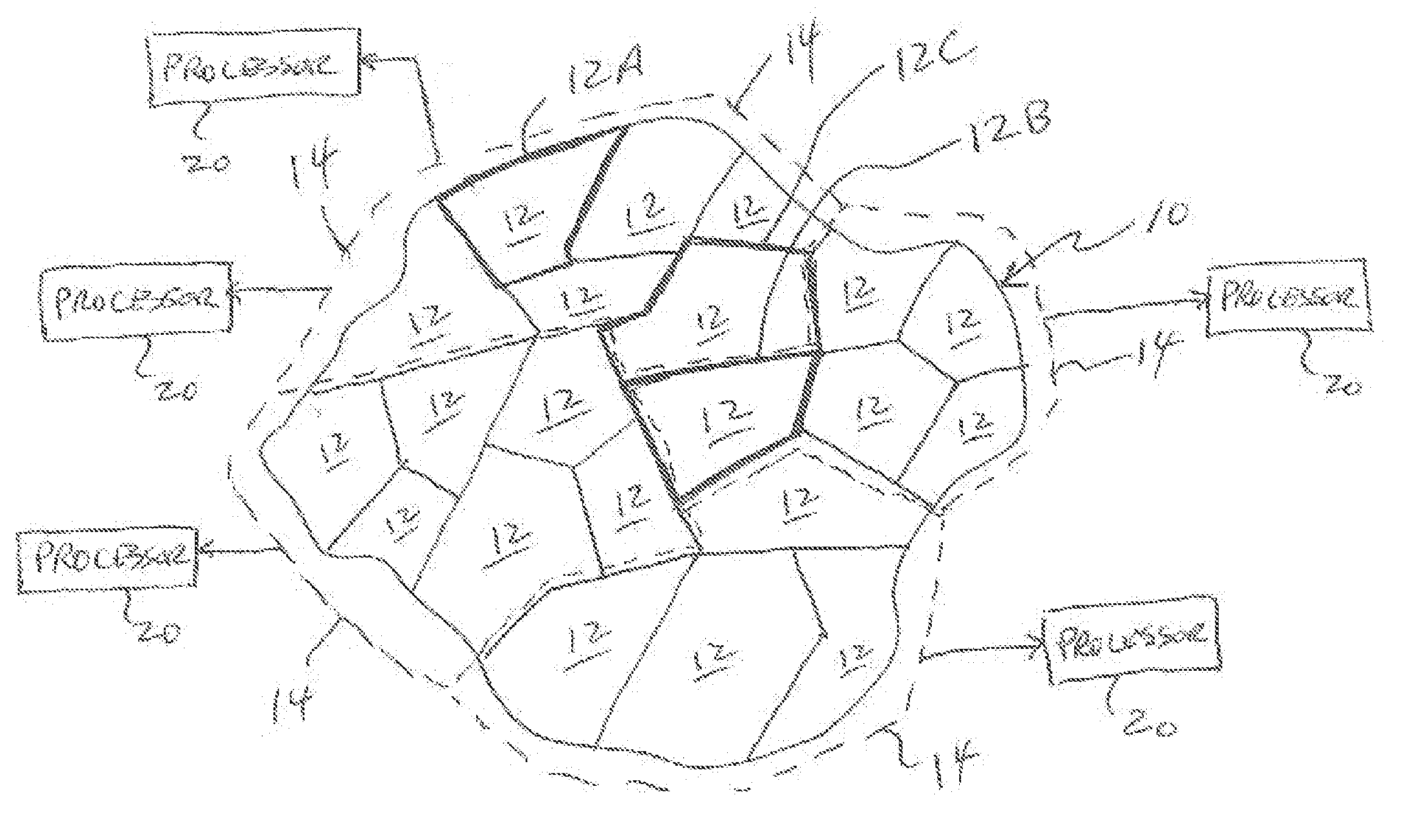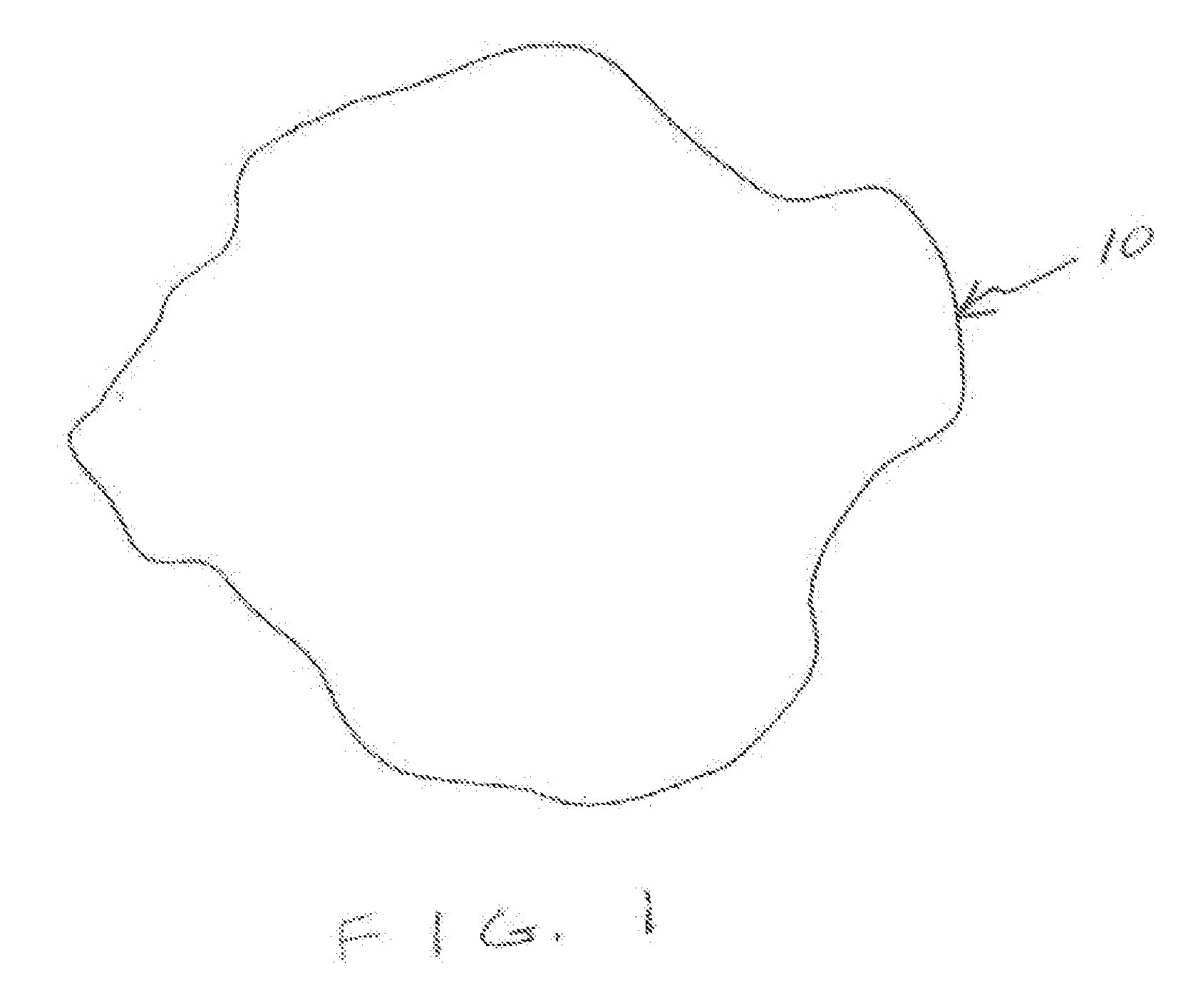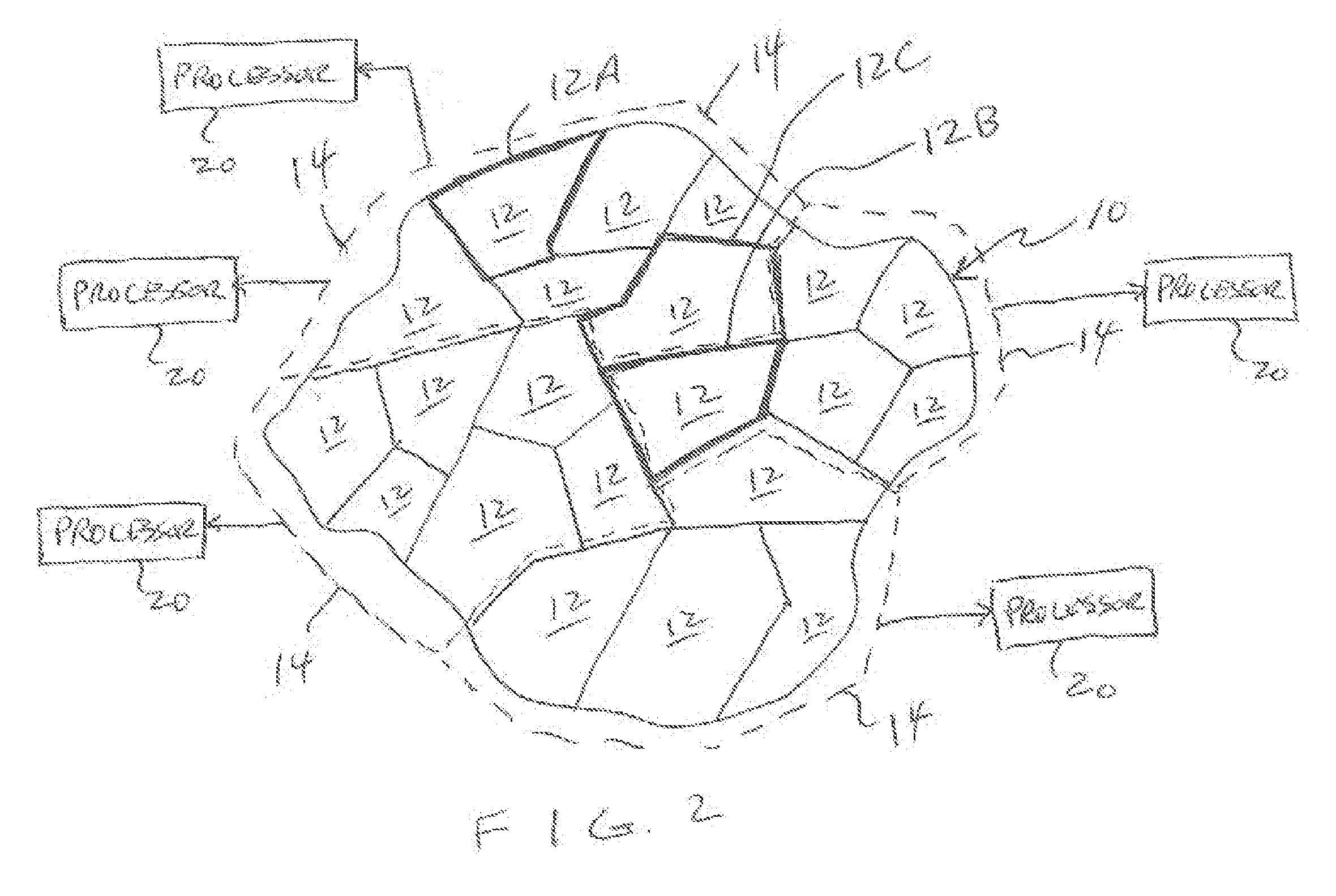Parallel Decoupled Mesh Generation
- Summary
- Abstract
- Description
- Claims
- Application Information
AI Technical Summary
Benefits of technology
Problems solved by technology
Method used
Image
Examples
case i
[0051] Referring now to FIG. 8B, the triangle a1a5a6 has two edges on the boundary, so it is not a junction triangle. Therefore, the triangle's three corresponding nodes (i.e., d15, d16 and d56) are combined to one designated d′15. The edges connecting the new node d′15 are the external ones, i.e., the edges that connect d15 to d12 and d15 to d25. The weight of the node is equal to the area of the triangle a1a5a6.
case ii
[0052] The triangle a2a4a5 does not include its circumcenter and so it is not a junction triangle. Following the same procedure as in Case I, the nodes d25, d24 and d45 are contracted into a new node d′25. The new node has a weight equal to the area of the triangle a2a4a5 and is connected to the nodes d12, d′15, d23 and d34.
case iii
[0053] The triangle a1a2a5 is a junction triangle. The areas of the triangles formed by its circumcenter c1 and its corners are added to the weight of the corresponding nodes. For example, the area |a2c1a1| is added to the node d12. Similarly, the areas |a2 a5c1| and |a1c1a5| are added to the nodes d′25 and d′15, respectively. Suppose that the partial separator a1c1a2 is the one that that forms the greater minimum angle. In this case, the nodes d′15 and d′25 are contracted into a new node d′25 with its weight equaling the sum weights of the two previous nodes. The graph edge connecting the nodes d′15 and d′25 is deleted, while the two other graph edges are contracted into one edge connecting d′25 to d12. The new edged weight is equal to the sum of the two previous edge weights, which is equal to the length of the partial separator a1c1a2.
PUM
 Login to View More
Login to View More Abstract
Description
Claims
Application Information
 Login to View More
Login to View More - R&D
- Intellectual Property
- Life Sciences
- Materials
- Tech Scout
- Unparalleled Data Quality
- Higher Quality Content
- 60% Fewer Hallucinations
Browse by: Latest US Patents, China's latest patents, Technical Efficacy Thesaurus, Application Domain, Technology Topic, Popular Technical Reports.
© 2025 PatSnap. All rights reserved.Legal|Privacy policy|Modern Slavery Act Transparency Statement|Sitemap|About US| Contact US: help@patsnap.com



